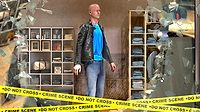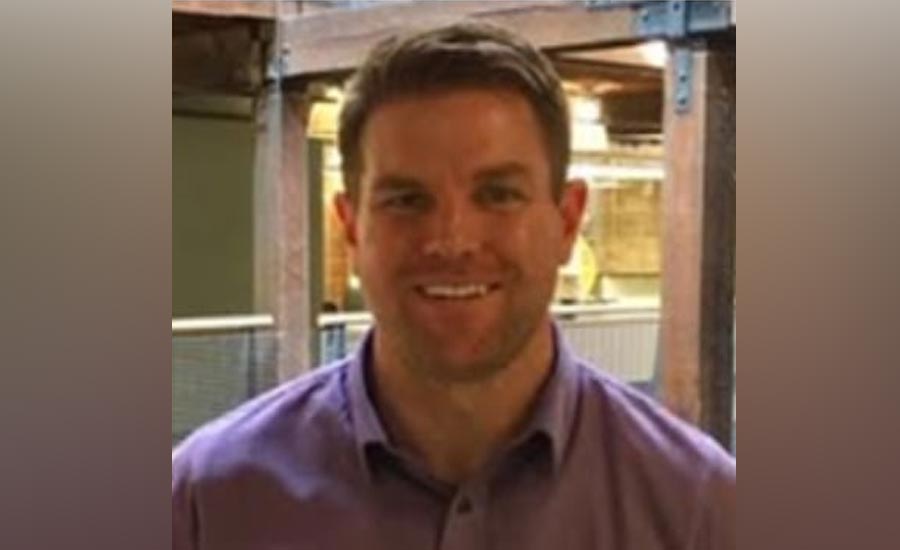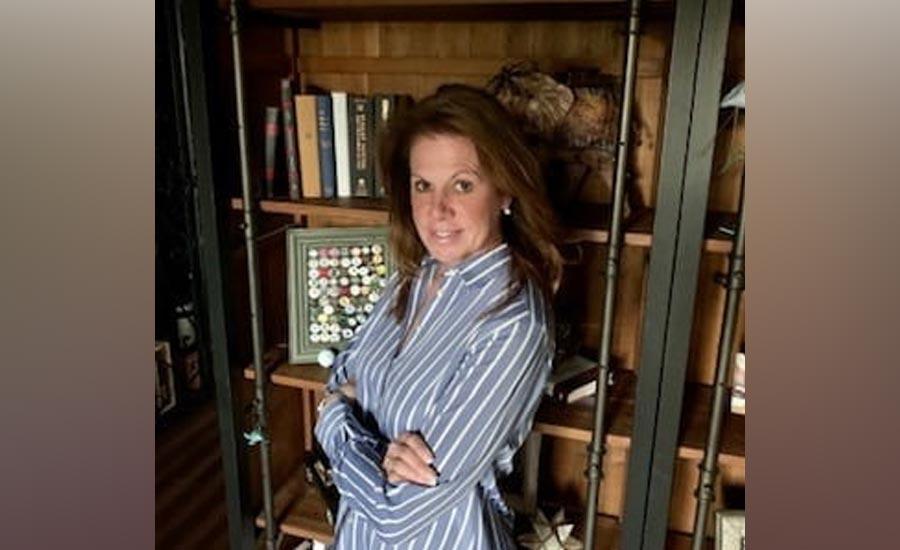Enterprise Services
The state of loss prevention and asset protection
Let’s take a look at pain points, best practices and COVID-19’s impact on loss prevention.

Fertnig / E+ via Getty Images

Alan Fagergren, Director of Loss Prevention at Prime Communications.
Image courtesy of Fagergren

Kristine Gentilella, Global Director of Retail Asset Protection at Under Armour.
Image courtesy of Gentilella

Marty Andrews, Vice President of Loss Prevention at VF Corporation.
Image courtesy of Andrews




When people hear the term “loss prevention,” they usually think about limiting shrinkage and stopping theft. “Those are definitely the headliners,” acknowledges Alan Fagergren, Director of Loss Prevention at Prime Communications, AT&T’s largest authorized retailer. “But retailers incur loss in a lot of different ways, especially now with COVID. Between efficient payroll processes, operational mistakes, employee safety, and discounting, loss prevention is involved in a lot of different buckets.”
Perhaps it’s because of all the different roles they play, but loss prevention (LP)/asset protection (AP) professionals tend to be passionate about their jobs. “In general, there’s this crazy love affair AP people have with the work we do,” says Kristine Gentilella, Global Director of Retail Asset Protection at Under Armour. “For me personally, it’s probably one of the most satisfying departments to be in because you’re able to be that go-between for the back-office component and the forward-facing retail side.”
But just like about everything else in the world, the loss prevention/asset protection space has been hugely affected by the pandemic and the “traditional” threat landscape for security professionals in this area has evolved over the past year and half.
Increased Fraud and Crime Attempts
Since the early days of the COVID-19 pandemic, the number of online purchases processed by retailers has exploded for many. “We’ve seen a huge uptick in our volume of traffic in the e-commerce channel, which is terrific, but that also means that fraudsters are getting more creative,” Gentilella says. Her digital fraud team has noticed a significant increase in attempts to push fraudulent orders through in the last year, for example. To combat this, they’ve been heavily utilizing analytical tools. “We have extremely low chargeback rates because we have an exceptional team that reviews these orders,” she says.
Fagergren says there has also been an increase in violent retail and white-collar crime and his team has seen more identity theft attempts than ever before. “I don’t necessarily think it’s due to only COVID, but I think that the technology and everything available on social media, and maybe being home more, has given more opportunity to some people out there that try to be one step ahead of us,” he says.
Marty Andrews, Vice President of Loss Prevention at VF Corporation, which owns several brands such as Vans, The North Face, and Timberland, has seen increased organized retail crime. He says this has been going on for years but not to this level of aggression and violence. “Subjects are going from mall to mall to mall stealing large amounts of merchandise to resell, without fear of being apprehended,” he says.
Looting and damage to stores have been new issues to address this past year as well, according to Andrews. VF Corporation has had several stores impacted. “These are things that we’ve never had to deal with or experience. I watched this activity on video remotely — subjects coming in and out of the store through broken windows for hours and hours without police response. That certainly was a long, upsetting couple of days,” he says.
Role Expansion
Many LP/AP departments have had to expand their roles over the past year or so as well. “I think a lot of asset protection departments have been utilized as the gatekeepers for COVID,” Gentilella says. “At Under Armour, we have been the leading force behind allowable occupancy rates, efficacy rates for vaccines, communications to the retail teams about regulatory changes on a global basis, and the protocol for mask wearing.” Though these aren’t the typical functions asset protection has had in the past, Gentilella believes that AP’s go-between role and ability to pivot quickly are “why things like this seem to end up in our bucket.”
In addition to expanded roles, security leaders in this space have also expanded their contacts. “I’ve noticed a shift in the last year that has been really great — retailers are working more closely together,” Andrews says. He’s never seen the sharing and cross-collaboration to this extent. For the first time ever, LP professionals across companies were all working on the same thing: COVID-19 response, civil unrest, and the election, which opened opportunities for information sharing. “It was great to work together as closely as we did. As difficult as this last year was, the power of working together was a silver lining that came out of it,” he says.
Gentilella also has seen more cooperation between retailers and she too attributes this to similar obstacles they’re all facing thanks to the pandemic. Under Armour is typically in a mall environment with other big-name brands. “What we’re seeing is that there’s much more willingness and outreach among the other AP departments and these retailers to work collectively together to try to bring some closure to these cases,” she says.
The challenges LP/AP professionals face have been exacerbated because of — and in some cases created by — the pandemic, and the pain points are many.
Here are just a few of those pain points:
Masks/Facial Coverings
Masks cause an obvious problem for LP/AP professionals. Facial coverings conceal a person’s face, creating a challenge when it comes to identifying suspects. “Criminals are able to wear masks, so they become difficult to identify, especially when you are trying to link multiple thefts together,” Andrews says. CCTV footage is not as effective as it once was when it is shared with law enforcement with the intent to prosecute. “That’s something new that we’re trying to work our way around,” acknowledges Gentilella.
Law Enforcement Cuts
Andrews notes that the reduction, as well as the perception of law enforcement, are also issues. “There’s resistance to cooperate with law enforcement because of the negative events over the past year,” he says. With law enforcement cuts, priority must be given to higher impact crimes, making retail theft less of a priority. “We lose our backbone without law enforcement, so that really puts controlling theft in the retailors’ hands.”
Feeling Ineffective
The biggest frustration for Fagergren is feeling thwarted even when you’re doing everything right. “You’ve got the policies and procedures in place and maybe you’ve caught someone doing a crime,” he says. “You try to work with law enforcement but holding those people responsible for their actions is a lot easier said than done.” Fagergren says that even having all the required evidence doesn’t necessarily guarantee prosecution or create a change in public policy.
Employee Turnover
Gentilella states that employee turnover is another obstacle LP/AP leaders face. “Turnover is always high in retail, and when you add this layer of COVID, I think that just exacerbates a pain point that is tricky for everyone,” she says. Turnover translates to new training, new people, and less loyalty, which causes more work and potential theft for operators and LP/AP staff.
Inability to Travel
Avoiding air travel is problematic for Andrews, since he has a team that’s spread across the country to strategically navigate the stores. Though they do travel by car, “there are markets in areas of the country that we cannot drive to and haven’t been able to get to, so that’s certainly been a challenge,” he says.
Creating solutions to combat these and other pain points is a crucial part of any loss prevention and asset protection department.
Here are a few of the best practices recommended by the LP/AP professionals Security spoke with:
1. Initiate Relationships
Fagergren believes that building relationships with policymakers, law enforcement, and other LP retail professionals is a key part of loss prevention. “The good thing about loss prevention is other retailers,” he says. “We might compete in sales with T-Mobile and Verizon, but on the loss prevention side, we’re all after the same goals.”
2. Create Partnerships
Creating partnerships and getting involved with your community are crucial too. “Don’t limit yourself to just one skill. Get out there in the weeds and get involved in retail councils. Start your own crime councils with other retailers,” Fagergren recommends. “You have to take the bull by the horns and create the change you want.”
3. Use What You Have
“We’ve done lots of virtual training,” Gentilella says. This includes with incident reporting that’s used to track events that happen in the store. This has even helped with COVID-19 contact tracing. “Look at utilizing the systems that you currently have,” she advises. “We had to do that in short order and that was a big win for us.”
4. Conduct Virtual Visits
Gentilella’s team has made sure their staff knew they were supported. They did virtual visits in the stores to make sure camera systems were being used, freight was being received correctly, and regulatory commitments were being met. “Once again, we were using a platform that we had to make sure that we were staying close to our teammates and that we were compliant with whatever regulatory changes were coming down,” she says.
Remote camera access has been valuable for Andrews and his team as well. Since they haven’t been able to utilize air travel to visit stores, they can still check in on them at any time, even if they’re closed. This has been important to make sure stores are secured. They’ve also developed a remote COVID-19 audit to make sure that practices are being followed now that stores are open and operating.
5. Drill Down on Risk
When the pandemic started and stores were shut down, Andrews says his team did a full risk analysis of the organization’s stores across North America. Having stores closed for months had not happened before and that, compounded with civil unrest, made for “risk analyses in 2020 like we’ve never had to do before,” he says.
6. Adapt and Expand
Because there are different ways to accomplish your goals, as a LP/AP professional, “you definitely need to be adaptable and be a good partner in the culture of your company,” Fagergren says. “If you can add value in several different buckets, your role is going to keep expanding.” He recommends getting involved in processes, operational procedures and policies, and payroll efficiencies to learn how to save your organization money.
Looking for a reprint of this article?
From high-res PDFs to custom plaques, order your copy today!










